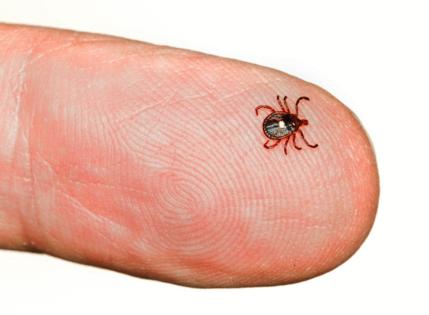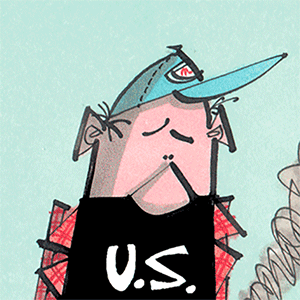Commentary: What we can learn from the lone star tick
Published in Op Eds
A few years ago, I went hiking through a scenic forested area of Virginia, hoping for a few screen-free moments of tranquility in nature. I emerged from the woods with Rocky Mountain spotted fever and ehrlichiosis courtesy of tick bites.
Although I’ll be taking precautions during future such forays, there is one species I might not break out the safety socks for: lone star ticks. These tiny insects—who have now expanded their territory from the southeastern U.S. to areas previously too chilly for them—can actually offer humans some benefits. And possibly even save lives.
One nibble from a lone star tick can leave the nibbled with an allergy to pink and red meats and dairy products, all of which cause itchy red blotches and worse. This may upset someone who is looking forward to a ham and cheese or pastrami sandwich, but there’s a bright side to this. Pig and cow flesh and the stuff that emerges from a cow’s udder already come with health warnings.
The Cleveland Clinic notes that red meat is high in saturated fats, which increase LDL (“bad”) cholesterol and a person’s risk of suffering from a heart attack or stroke. The International Agency for Research on Cancer classifies red meat as a carcinogen. Processed varieties go into the category of level 1 carcinogens—right up there with cigarettes and asbestos.
Cows, like all female mammals, lactate only when they’re pregnant or have just given birth, and their milk is designed to meet the needs of their calves, who have four stomachs and gain hundreds of pounds in mere months (when they’re not taken away from their mothers, as they are in the dairy industry). Dairy products—particularly cheese—are the main source of saturated fat in the typical American diet, according to the Physicians Committee for Responsible Medicine, contributing to heart disease, type 2 diabetes and Alzheimer’s disease.
Dairy typically has a high fat content and a prevalence of hormones. Research funded by the National Cancer Institute, the National Institutes of Health, and the World Cancer Research Fund determined that women who consumed 1/4 to 1/3 cup of cow’s milk per day had a 30% increased risk of breast cancer. Other major studies correlated dairy consumption with ovarian and prostate cancers.
And what about milk marketers’ go-to strategy to keep you drinking dairy, calcium? Relying on those ads for health advice is like trusting the latest hazardous fad on TikTok. Numerous studies of tens of thousands of patients around the globe have determined that in countries where people drink the most cow’s milk, hip fracture rates are the highest, likely due to the fact that human bodies can absorb only about 32% of the calcium in cow’s milk and may use calcium from our bones to buffer the acids associated with diets high in animal protein.
Swapping animal-derived food for plant meats, milks and cheeses has an unmatched positive impact on our health, and itchy, blotchy skin can be a powerful incentive to switch to them. PETA has even released the Lone Star Tick Cookbook, which is filled with tasty vegan recipes for people who’ve been bitten by one of those ticks—or just by the kindness bug. The recipes—including Philly “cheesesteaks,” slow-cooker Texas chili and vegan sausage, biscuit and gravy sandwiches—are designed to tickle even the staunchest carnivores.
Ecologist Lars Chittka determined that insects are as conscious and aware as any dog or primate. Perhaps lone star ticks think they’re doing us a favor. Or perhaps, like many of us, they’re just doing their part to create more compassion in the world.
_____
Ingrid Newkirk is the president of People for the Ethical Treatment of Animals, 501 Front St., Norfolk, VA 23510; www.PETA.org.
_____
©2025 Tribune Content Agency, LLC.

























































Comments